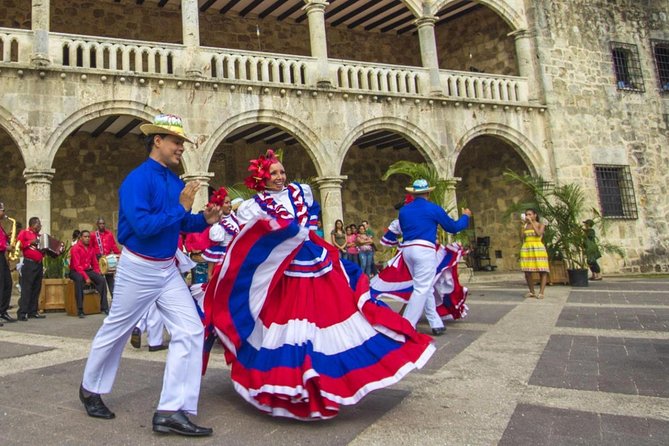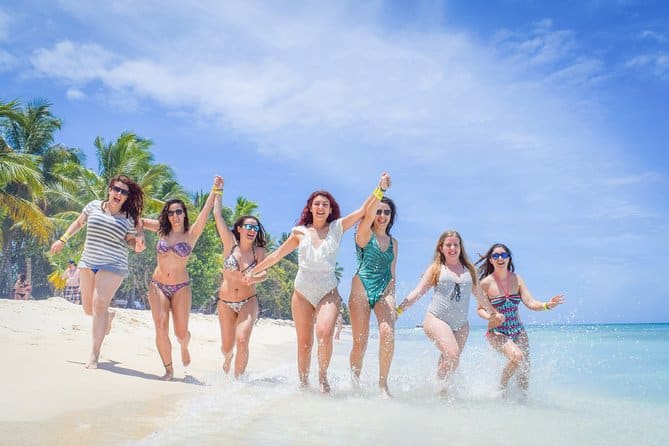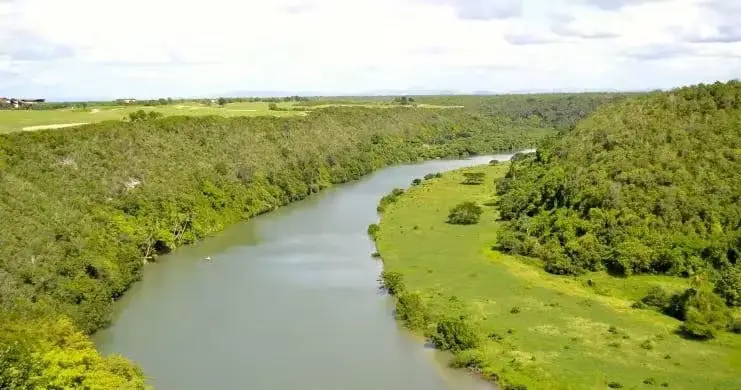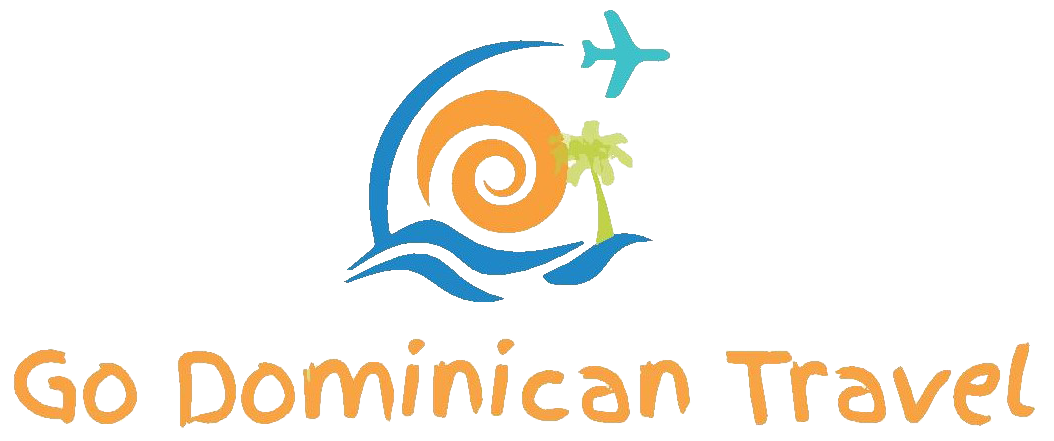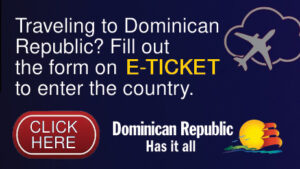Celebrating Culture and Tradition: Festivals and Events in the Dominican Republic
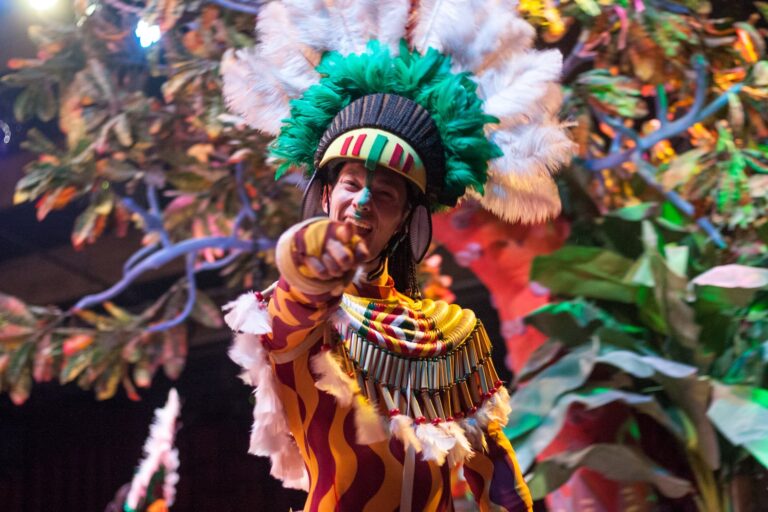
Table of Contents
ToggleThe Dominican Republic is known for its lively and colorful celebrations that are deeply rooted in its culture and history. From religious festivals to carnivals and national holidays, the country has plenty of opportunities to celebrate throughout the year. In this article, we’ll take a closer look at some of the most important celebrations in the Dominican Republic and their dates.
Independence Day Independence Day is the most significant national holiday in the Dominican Republic. It commemorates the country’s independence from Haiti, which was declared on February 27, 1844. The day is celebrated with parades, concerts, fireworks, and other cultural events throughout the country.
Carnival Carnival is a pre-Lenten celebration that takes place in February or March, depending on the date of Easter. It’s a time of colorful costumes, music, and dancing, with each region of the country having its own unique traditions. The biggest carnival celebrations take place in Santo Domingo, La Vega, and Santiago.
Semana Santa (Holy Week) Semana Santa is the week leading up to Easter Sunday and is a significant religious holiday in the Dominican Republic. It’s a time when many Dominicans take a break from work and school to attend church services, processions, and other religious events. The most famous Semana Santa celebration takes place in the town of Bonao, where a large procession of penitents makes its way through the streets.
Día de las Mercedes Día de las Mercedes is a religious holiday that celebrates the patron saint of the Dominican Republic, Our Lady of Mercedes. It takes place on September 24 and is marked by religious processions, music, and dancing.
Dia de los Muertos (Day of the Dead) Dia de los Muertos is a traditional Mexican holiday that is also celebrated in the Dominican Republic. It takes place on November 1 and 2 and is a time to remember and honor loved ones who have passed away. It’s marked by colorful altars, parades, and other cultural events.
Christmas Christmas is a big celebration in the Dominican Republic, with many customs and traditions that are unique to the country. It’s a time of family gatherings, feasting, and gift-giving. One of the most popular traditions is the parranda, a type of musical party that takes place throughout the holiday season.
New Year’s Eve New Year’s Eve is also a big celebration in the Dominican Republic, with many people staying up late to welcome in the new year with fireworks, music, and dancing.
In conclusion, the Dominican Republic has a rich and diverse calendar of celebrations throughout the year, each with its own unique traditions and cultural significance. Whether you’re looking to experience the excitement of carnival or the solemnity of Semana Santa, there’s always something to celebrate in this vibrant country.
Carnival in Punta Cana
Punta Cana is a popular destination in the Dominican Republic known for its pristine beaches, luxury resorts, and vibrant culture. One of the most exciting celebrations in Punta Cana is the annual Carnival.
The Carnival in Punta Cana takes place every year in February, and it is a lively and colorful event that attracts locals and tourists alike. The Carnival is a celebration of Dominican culture and heritage, with colorful costumes, music, and dancing.
The origins of Carnival in the Dominican Republic can be traced back to the Spanish colonial period, when African slaves brought their own traditions and celebrations to the island. Today, the Carnival is a fusion of African, European, and indigenous Taino cultures.
The Punta Cana Carnival is a two-day event that usually takes place on the first weekend of February. The festivities start with a colorful parade that winds through the streets of the city. The parade features dancers, musicians, and floats decorated with bright colors and feathers.
During the Carnival, you will see a variety of traditional Dominican costumes, including the colorful “diablo cojuelo” (limping devil) costume, the “vejigante” (masked figure) costume, and the “macara” (wooden mask) costume.
In addition to the parade, there are also a variety of other activities and events taking place during the Carnival, including live music, dancing, and cultural exhibitions. You can sample traditional Dominican foods and drinks, watch live performances by local musicians and dance troupes, and participate in games and contests.
If you are planning to visit Punta Cana during the Carnival, it is important to book your accommodations and transportation well in advance, as this is a popular time for tourists to visit the city. Also, be prepared for large crowds and heavy traffic during the parade and other events.
In conclusion, the Carnival in Punta Cana is an exciting and vibrant celebration of Dominican culture and heritage. With its colorful costumes, lively music, and festive atmosphere, it is a must-see event for anyone visiting the Dominican Republic.
Traditions in the Dominican Republic
The Dominican Republic is a country rich in culture and traditions, and its people take great pride in preserving their heritage. From music and dance to food and festivals, the Dominican Republic offers a unique experience for visitors looking to immerse themselves in the local culture. In this blog, we will explore some of the traditions of the Dominican Republic and answer some frequently asked questions.
Merengue and Bachata Music Merengue and Bachata are the two most popular music genres in the Dominican Republic. Merengue is a fast-paced dance rhythm, while Bachata is slower and more romantic. Both are usually played at social gatherings, and you will often see locals dancing to the beat. These genres of music have become famous worldwide, and several artists have emerged from the Dominican Republic.
Baseball Baseball is the national sport of the Dominican Republic and is widely played and followed throughout the country. Many Dominican players have made it to the major leagues in the United States, and it is not uncommon to see locals gathered around a TV to watch a game.
Carnival Carnival is a significant celebration in the Dominican Republic, and it is celebrated in February or March. The festivities last for several days and feature colorful parades, music, and dance. Carnival is an excellent opportunity to experience the vibrant culture of the Dominican Republic.
Food Dominican cuisine is a blend of African, European, and indigenous influences. Some popular dishes include Sancocho, a hearty stew made with meat and vegetables, and Mangu, a dish made of mashed plantains, often served with eggs, cheese, and salami.
FAQs:
Q: What is the most significant holiday in the Dominican Republic? A: The most significant holiday in the Dominican Republic is Independence Day, which is celebrated on February 27th.
Q: What is the national flower of the Dominican Republic? A: The national flower of the Dominican Republic is the Bayahibe Rose.
Q: What is the traditional dress of the Dominican Republic? A: The traditional dress of the Dominican Republic is the “Pollera Colora,” a colorful dress worn during festivals and celebrations.
Q: What is the traditional dance of the Dominican Republic? A: The traditional dance of the Dominican Republic is Merengue.
In conclusion, the Dominican Republic is a country full of rich traditions and culture. From the music and dance to the food and festivals, there is something for everyone to experience. So, next time you visit the Dominican Republic, make sure to immerse yourself in the local culture and take part in some of the traditional celebrations.
Exploring the Rich History of the Dominican Republic
The Dominican Republic is a country steeped in history, with a rich and diverse cultural heritage. From the Taíno people to the Spanish conquest, and from the struggles for independence to modern-day politics, the Dominican Republic has a lot to offer those interested in history. In this blog post, we’ll explore some of the most common questions about the country’s history and provide answers to help you better understand this fascinating place.
- Who were the Taíno people?
The Taíno were the indigenous people of the Dominican Republic and other parts of the Caribbean. They were known for their advanced agricultural techniques, artistic skills, and unique culture. Sadly, their population was decimated by European diseases and forced labor, and they are now considered extinct.
- What was the Spanish conquest of the Dominican Republic like?
The Spanish arrived in the Dominican Republic in 1492, led by Christopher Columbus. They claimed the island for Spain and began to colonize it, bringing African slaves to work on sugar plantations. The native Taíno people were enslaved and forced to convert to Christianity. The Spanish rule lasted for over 300 years, until the country gained its independence in 1821.
- What was the struggle for independence like?
The struggle for independence was a long and difficult process that took place over many years. It began in 1843, when a group of Dominicans in Haiti formed the secret society La Trinitaria to fight for independence. The most famous figure in the struggle was Juan Pablo Duarte, who led the group that declared independence in 1844. However, the country faced many challenges in the years that followed, including invasions by Haiti and Spain, political instability, and economic struggles.
- What is the legacy of Rafael Trujillo?
Rafael Trujillo was a dictator who ruled the Dominican Republic from 1930 until his assassination in 1961. He was known for his brutal regime, which included censorship, torture, and murder. Trujillo’s legacy is still felt in the country today, as many of the structures and institutions he put in place remain.
- What is the current political situation in the Dominican Republic?
The Dominican Republic is a democratic republic with a president and a bicameral legislature. The country has had its share of political instability and corruption, but recent years have seen some improvements. However, there is still work to be done to ensure that the government serves the needs of all citizens.
In conclusion, the history of the Dominican Republic is a complex and fascinating subject that is well worth exploring. From the Taíno people to the struggle for independence and beyond, this country has a rich and diverse cultural heritage. By learning about its past, we can better understand its present and work towards a brighter future.
The Dominican Republic Politics & Religion
The Dominican Republic is a country with a rich history and a diverse culture, shaped by its unique blend of religion and politics. The country is predominantly Catholic, with over 60% of the population identifying as such, making it the largest religious group in the country. However, there is also a significant Protestant minority, accounting for around 18% of the population.
Religion plays an important role in the daily life of Dominicans, and it is often intertwined with their cultural traditions and festivities. Many of the country’s most important celebrations, such as Christmas, Easter, and the Feast of Our Lady of Altagracia, have a strong religious significance.
On the other hand, politics in the Dominican Republic has a complex and tumultuous history. The country has experienced numerous political and social upheavals, including a period of dictatorship that lasted from 1930 to 1961. In recent years, there have been several corruption scandals that have rocked the country’s political establishment, leading to widespread protests and calls for reform.
In terms of the relationship between religion and politics, the Dominican Republic has a secular constitution that guarantees freedom of religion. However, there have been instances where religious groups have influenced political decision-making, particularly in areas such as social policy and education.
FAQs:
Q: What is the dominant religion in the Dominican Republic? A: The dominant religion in the Dominican Republic is Catholicism.
Q: Are there any significant Protestant groups in the country? A: Yes, there is a significant Protestant minority in the country, accounting for around 18% of the population.
Q: How does religion impact daily life in the Dominican Republic? A: Religion plays an important role in the daily life of Dominicans, and it is often intertwined with their cultural traditions and festivities.
Q: Has religion ever influenced politics in the Dominican Republic? A: Yes, there have been instances where religious groups have influenced political decision-making, particularly in areas such as social policy and education.
Q: Does the Dominican Republic have a secular or religious government? A: The Dominican Republic has a secular constitution that guarantees freedom of religion.

